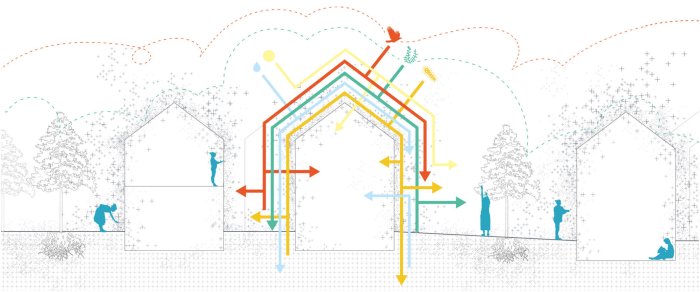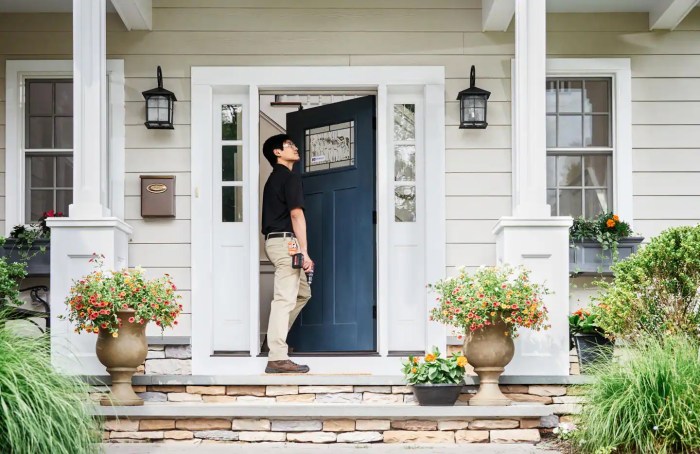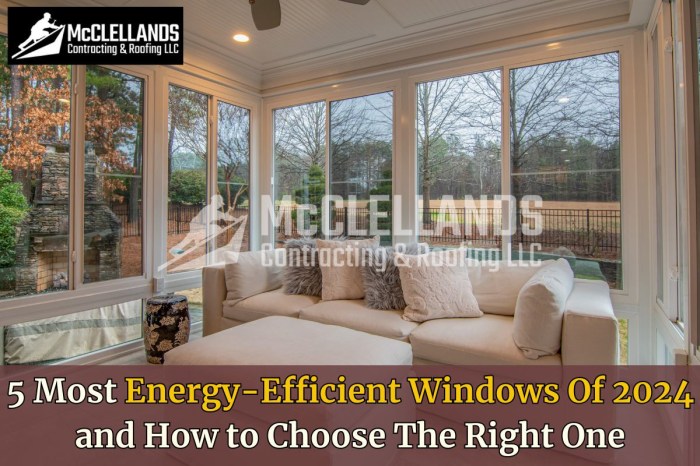Exploring Brodskys Envelope Approach for Eco-Friendly Buildings
Embarking on a journey into the realm of sustainable architecture with Brodsky’s Envelope Approach for Eco-Friendly Buildings, we delve into the innovative strategies and principles driving eco-conscious design.
Highlighting the core concepts and applications of this approach, we uncover how it revolutionizes traditional building practices in favor of a greener future.
Brodsky’s Envelope Approach for Eco-Friendly Buildings
Brodsky’s Envelope Approach in sustainable architecture focuses on optimizing the building envelope to enhance energy efficiency and reduce environmental impact. This approach emphasizes the importance of the building envelope in regulating heat transfer, air leakage, and moisture control, ultimately leading to a more sustainable building design.
Key Principles of Brodsky’s Envelope Approach
- Optimizing insulation levels to minimize heat loss and gain, reducing the need for mechanical heating and cooling.
- Utilizing high-performance windows and doors to enhance natural light, ventilation, and thermal comfort.
- Implementing airtight construction techniques to prevent air leakage and improve energy efficiency.
- Incorporating thermal mass into the building envelope to stabilize indoor temperatures and reduce energy consumption.
- Choosing sustainable and durable materials for the envelope to minimize environmental impact and ensure long-term performance.
Contribution to Eco-Friendly Building Design
Brodsky’s Envelope Approach plays a crucial role in promoting eco-friendly building design by reducing energy consumption, lowering greenhouse gas emissions, and enhancing indoor environmental quality. By focusing on the building envelope, architects and designers can create more sustainable buildings that prioritize energy efficiency, occupant comfort, and environmental stewardship.
Importance of Sustainable Building Design
Embracing sustainable building design is crucial in today's world to reduce the environmental impact of construction and improve energy efficiency.
When comparing traditional building design methods with sustainable approaches like Brodsky’s Envelope Approach, it becomes evident that the latter focuses on maximizing energy efficiency, utilizing renewable resources, and minimizing waste generation. This results in buildings that have a lower carbon footprint and contribute to a healthier environment.
Examples of Eco-Friendly Features
- Integration of high-performance insulation materials to reduce energy consumption for heating and cooling.
- Utilization of natural lighting through strategically placed windows and skylights to decrease the need for artificial lighting.
- Incorporation of green roofs and living walls to improve air quality, provide insulation, and reduce stormwater runoff.
- Installation of energy-efficient HVAC systems and appliances to minimize electricity usage.
Energy Efficiency in Building Design

Energy efficiency in building design is crucial for reducing energy consumption and environmental impact. Brodsky's Envelope Approach plays a key role in enhancing energy efficiency in buildings by focusing on the building envelope, which includes insulation, ventilation, and natural lighting.
Role of Insulation
Proper insulation in a building helps to reduce heat loss in the winter and heat gain in the summer. By effectively insulating the building envelope, Brodsky's approach ensures that the interior temperature remains stable, reducing the need for heating and cooling systems to run constantly
Role of Ventilation
Ventilation is essential for maintaining indoor air quality and regulating temperature. Brodsky's Envelope Approach emphasizes the importance of proper ventilation systems to ensure fresh air circulation and reduce the reliance on mechanical cooling systems, ultimately saving energy.
Role of Natural Lighting
Natural lighting not only enhances the aesthetic appeal of a building but also helps in reducing the need for artificial lighting during the day. By strategically incorporating windows and skylights in the building envelope design, Brodsky's approach maximizes natural light penetration, reducing energy consumption associated with lighting.
Reducing Energy Consumption
By addressing insulation, ventilation, and natural lighting in the building envelope, Brodsky's Envelope Approach effectively reduces energy consumption. The optimized design minimizes the need for heating, cooling, and lighting systems, leading to lower energy bills and a smaller carbon footprint.
Materials and Construction Techniques
When it comes to eco-friendly construction under Brodsky's Envelope Approach, the choice of materials plays a crucial role in ensuring sustainability and energy efficiency. Selecting environmentally-friendly materials and utilizing sustainable construction techniques are key aspects of this approach.
Choice of Materials
In eco-friendly construction, the choice of materials is critical for reducing the environmental impact of buildings. Opting for materials that are renewable, recyclable, and locally sourced can significantly lower carbon footprint. For example, using reclaimed wood, bamboo flooring, recycled steel, and low-VOC paints are common practices in sustainable building design.
These materials not only contribute to a healthier indoor environment but also promote resource conservation and reduce waste generation.
Construction Techniques
In addition to selecting the right materials, sustainable construction techniques are essential for achieving eco-friendly buildings. Techniques such as passive solar design, proper insulation, efficient HVAC systems, and water-saving fixtures are all part of Brodsky's Envelope Approach to ensure energy efficiency and environmental responsibility.
Implementing these techniques not only reduces energy consumption but also minimizes the overall environmental impact of the building throughout its lifecycle.
Importance of Environmentally-Friendly Materials
Choosing environmentally-friendly materials for building projects is crucial in mitigating the negative effects of construction on the environment. By opting for sustainable materials, builders can contribute to the preservation of natural resources, reduce greenhouse gas emissions, and create healthier living spaces for occupants.
Moreover, the use of eco-friendly materials can lead to long-term cost savings by improving energy efficiency and reducing maintenance requirements. Overall, prioritizing the selection of environmentally-friendly materials is a fundamental aspect of sustainable building design under Brodsky's Envelope Approach.
Final Thoughts
In conclusion, Brodsky’s Envelope Approach stands as a beacon of sustainable design, offering a blueprint for environmentally responsible construction that prioritizes energy efficiency and eco-friendly practices.
Helpful Answers
How does Brodsky’s Envelope Approach differ from conventional building methods?
Brodsky’s Envelope Approach focuses on maximizing energy efficiency through strategic design elements like insulation and natural lighting, unlike traditional methods that may overlook these aspects.
What are some examples of eco-friendly features that can be implemented using this approach?
Features like green roofs, solar panels, and energy-efficient windows are commonly integrated into buildings following Brodsky’s Envelope Approach to enhance sustainability.
How does proper building envelope design contribute to reducing energy consumption?
By optimizing insulation, ventilation, and natural lighting, a well-designed building envelope can minimize the need for artificial heating or cooling, thereby lowering energy usage.




